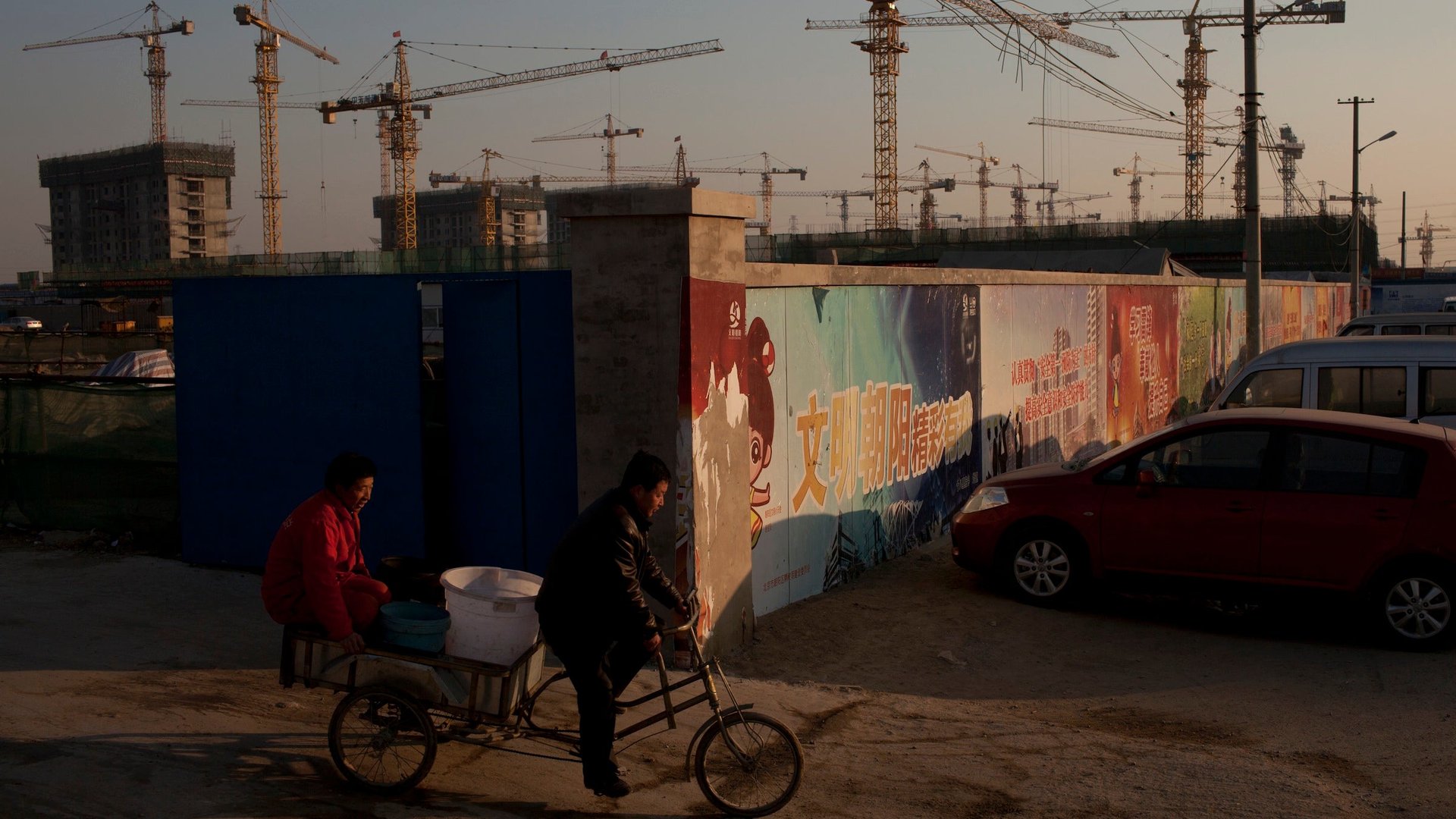China’s promising GDP growth for the year masks dangers under the surface
China’s GDP rose 7.9% year on year in the fourth quarter, and 7.8% for 2012 as a whole. Both figures beat expectations by 0.1%, reassuring China bulls that the nation is recovering from last year’s slowdown.


China’s GDP rose 7.9% year on year in the fourth quarter, and 7.8% for 2012 as a whole. Both figures beat expectations by 0.1%, reassuring China bulls that the nation is recovering from last year’s slowdown.
But it is still the slowest growth since 1999. And even that was possible only because the economy is on artificial stimulants. Growth has been boosted by heavy public investment in new infrastructure funded by ever increasing credit.
As Quartz has pointed out in recent days, foreign investment in China’s manufacturing sector is falling as multinationals seek out cheaper labor markets, such as Vietnam. Yet China’s local governments are under pressure to meet Beijing-mandated GDP targets, so they are borrowing heavily to fund make-work projects. A massive $85 billion of new credit flowed into infrastructure projects in the last nine months of last year.
And while China’s exports appear to be rising healthily, here is our analysis on how local governments burnish their export figures by manipulating trade data, while domestic companies fake exports to win undeserved tax rebates.
The root cause of China’s GDP rise is of no concern to foreign nations and companies who will benefit from the stimulus spending. The Australian dollar rose slightly today as traders speculated the nation’s coal and iron ore miners would do well out of all the new railways, roads and bridges China is building. Diversified miner BHP Billiton’s Sydney-traded stock has also ticked up today.
Economists are divided on whether Beijing will tighten monetary policy by restricting bank lending this year, to calm concerns about over-exuberant lending. But even if it does, it may still allow unregulated lending via shadowy trust products and Ponzi-like savings vehicles that banks sell to their depositors to flourish. To keep the economy growing in the face of sustained global slowdown, China probably has no choice.